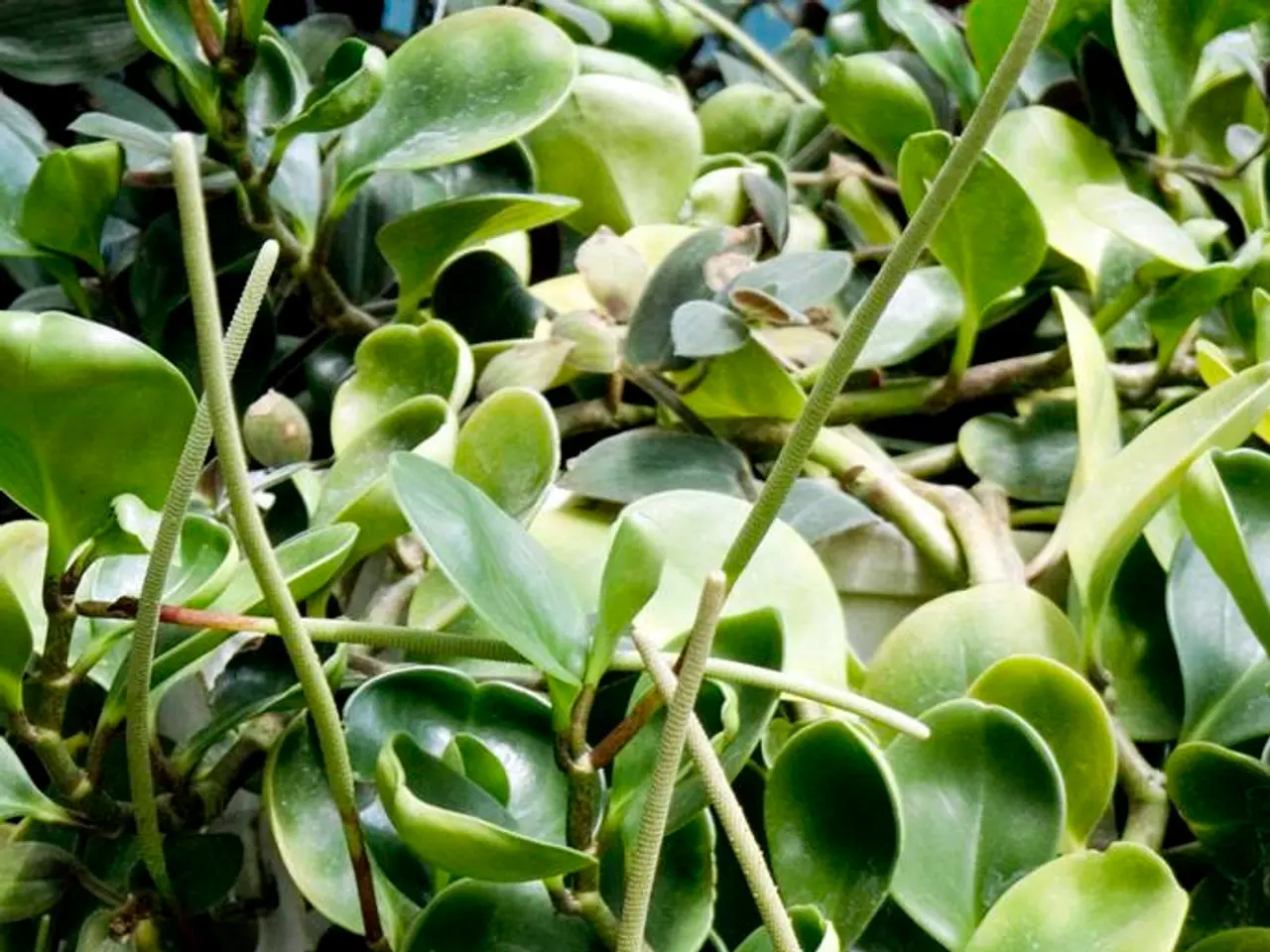Assisting Bloom: Strategies for Expanding Hydrangea's Oversized Blossoms
In this article, we'll be focusing on the specific needs of hydrangeas during their growth and blooming stages.
Hydrangeas require a balanced diet of essential nutrients to thrive, particularly potassium, phosphorus, magnesium, and nitrogen. These nutrients are vital for the development of strong stems, large flower clusters, and lush buds.
During the blooming period, regular and abundant watering with warm water is crucial for maintaining soil moisture, especially in hot weather. The soil should be kept evenly moist but well-drained to prevent root rot. Deep watering encourages strong root growth and bigger blooms. Avoid letting the soil dry out, especially during the flowering and bud formation phases.
Mulching the soil around the hydrangea bush with a 3-5 cm layer helps retain moisture and protect the roots. This practice also moderates soil temperature, making it ideal for hydrangeas.
For an extra boost, consider fertilizing with phosphorus and potassium-rich fertilizers a few weeks before blooming. This can be done by applying approximately 45-50 grams of superphosphate and 30-35 grams of potassium in a dissolved form per bush.
In the budding phase, foliar feeding is an effective method for delivering nutrients directly to the hydrangea's leaves, promoting strong plant growth and large flower clusters. A suitable solution can be made by dissolving 5 grams of magnesium sulfate, 3 grams of potassium sulfate, and 8 grams of ammonium sulfate in 5 liters of water. Special attention should be paid to the undersides of the leaves when spraying this solution.
Two weeks after the second feeding, watering the hydrangea with a weak solution of potassium permanganate is beneficial. This additional step in hydrangea care during the blooming phase can help ensure healthy, vibrant blooms.
For those seeking an alternative foliar spray solution during the budding phase, a solution can be made by dissolving 15 grams of ammonium sulfate, 5 grams of potassium sulfate, and 10 grams of magnesium sulfate in 10 liters of water.
Lastly, it's important to maintain the hydrangea bush's shape during its blooming phase. Use supports, rings, or nets to help prevent heavy, large flower clusters from breaking the stems and maintain its aesthetic appeal.
By following these tips, you'll be well on your way to enjoying large, beautiful hydrangea flower clusters in your garden.
To ensure the prosperity of your hydrangea plants, specifically during their blooming phases, it's essential to incorporate elements from lifestyle and home-and-garden, such as gardening. Foliar feeding with a solution containing magnesium sulfate, potassium sulfate, and ammonium sulfate, at the budding phase, can deliver nutrients directly to the leaves and promote strong growth, lush buds, and large flower clusters.




